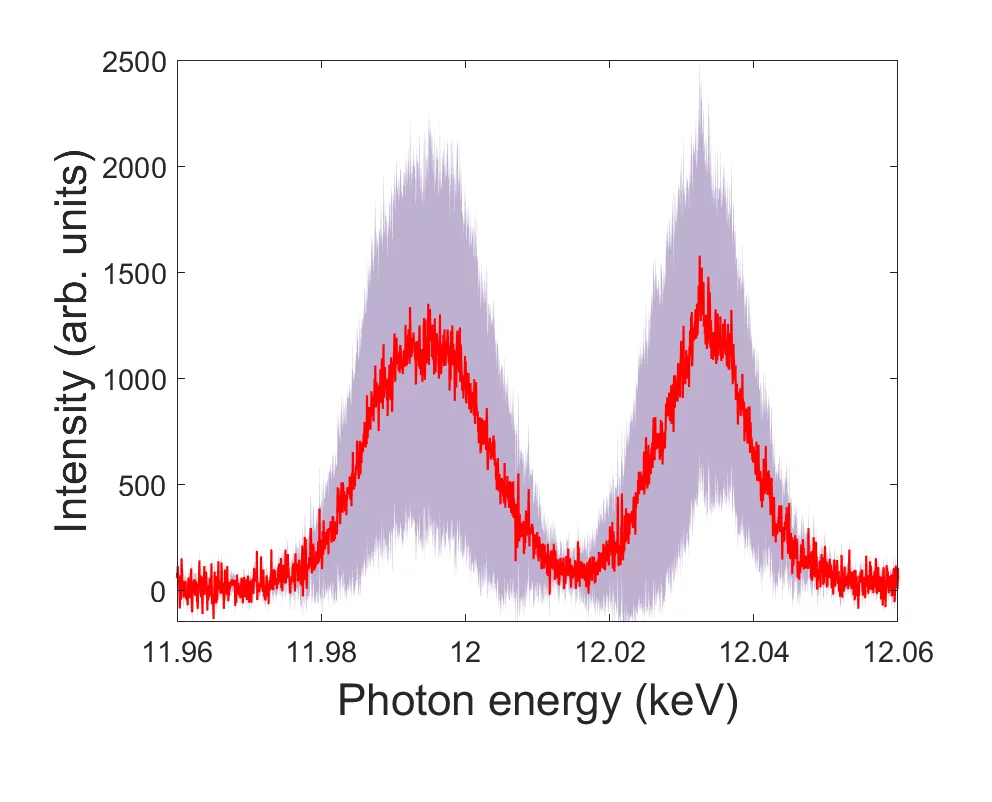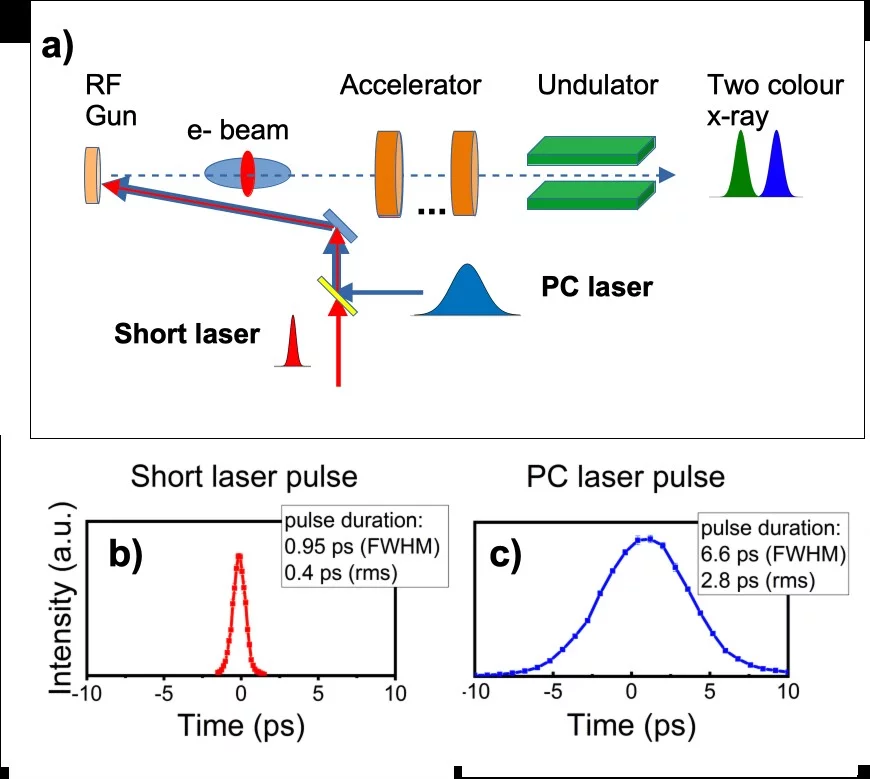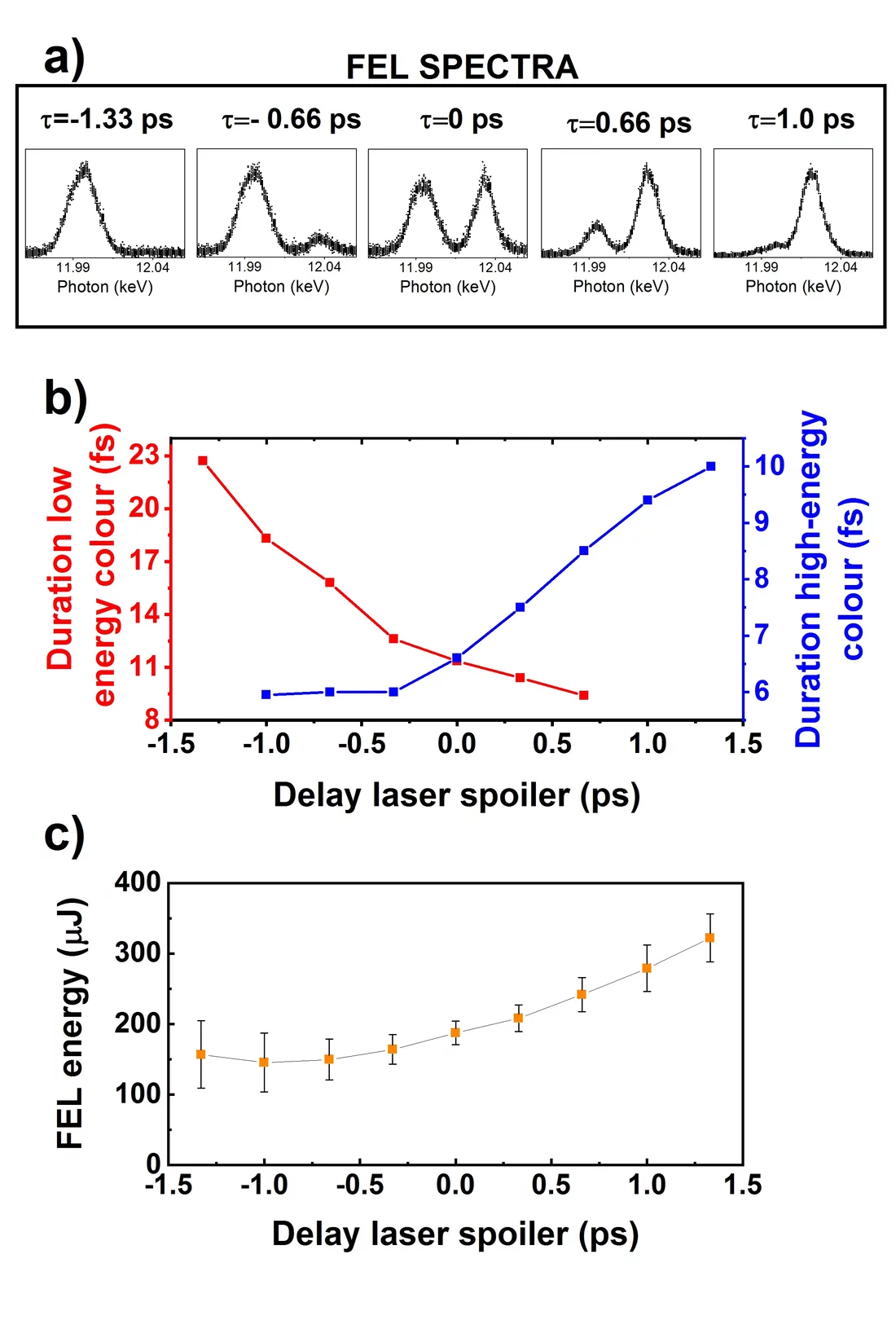X-ray free electron lasers (FELs) are well-suited to interrogate a wide range of processes initiated using conventional lasers. In these pump-and-probe schemes, the FEL and the laser are typically synchronized at best to within tens of femtoseconds. The challenge of understanding the physics of transient processes in depth would be facilitated by higher temporal synchronization. Two-color hard X-ray emission is an emerging mode of operation for FELs, which has the potential not only to reduce the timing jitter between the pump and the probe, by generating the two pulses from the same electron bunch, but also to enable new X-ray multispectral spectroscopy schemes. Until now, two-color FELs have been realized with inefficient use of the undulators or through time-consuming machine setup which is not always compatible with user facilities operation.
At SwissFEL, we recently demonstrated a straightforward and noninvasive method to produce two-color X-ray pulses. This new approach relies on electron beam emittance spoiling based on the use of two photocathode drive lasers. A sub-picosecond laser pulse (emittance spoiler) is overlapped with the photocathode laser. The excess of charge leads to a localized increase of the emittance, which prevents FEL amplification. The unspoiled slices of the bunch still produce FEL emission which is centered at two different wavelengths due to the linear energy chirp accumulated along the linear accelerator. The temporal and spectral separation between the two colors (Δt and Δλ) can be tuned by changing the compression and the energy chirp of the electron beam or by adjusting the intensity of the laser emittance spoiler. Δt can be varied between few and hundreds of femtoseconds. The maximum relative color separation expected at SwissFEL is approximately 2%.
The laser emittance spoiler surpasses other two-color FEL approaches in many relevant figures of merit. This method allows, in fact, fast and efficient setup of the two-color FEL using the optimal machine configuration. As a result, high FEL pulse energy and remarkable intensity and spectral stability can be achieved. In the experiment at SwissFEL, we produced two-color pulses around 12 keV with energy of 160 microjoules corresponding to the 56% of pulse energy of standard SASE FEL mode. In contrast to other two-color schemes, the laser emittance spoiler does not require solid obstacles placed on the electron bunch or complex beam manipulation. Therefore, it does not cause beam radiation losses and it is readily applicable to high-average power/high repetition rate FELs. In addition, this method allows FEL pulse shaping as it introduces an additional means of control over the duration of the individual (single-color) pulses and their temporal and spectral separation. Finally, with the laser emittance spoiler, sophisticated pump and probe scheme with shot-to-shot mode switch between one and two color FEL become feasible.
This article has been selected as the winner of the first Ernest Courant Outstanding Paper Recognition, a honor sponsored by the journal Physical Review Accelerators and Beams (PRAB) and the APS Division of Physics of Beams (DPB). This honor recognizes the most outstanding paper published in PRAB annually.
References
Carlo Vicario, Simona Bettoni, Alberto Lutman, Andreas Dax, Martin Huppert and Alexandre Trisorio, Two-color x-ray free-electron laser by photocathode laser emittance spoiler, Phys. Rev. Accel. Beams 24, 060703 – Published 28 June 2021.
https://journals.aps.org/prab/abstract/10.1103/PhysRevAccelBeams.24.060703
Contact
Dr. Carlo Vicario
SwissFEL Photon Diagnostics
Paul Scherrer Institute PSI
+41 56 310 3163
carlo.vicario@psi.ch




